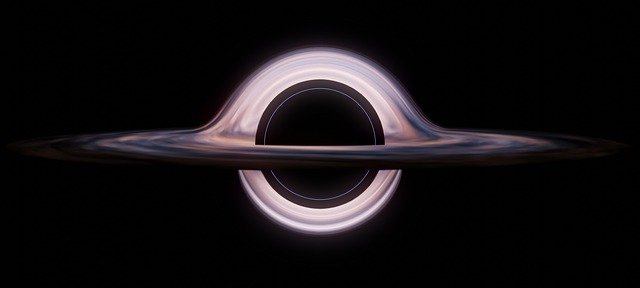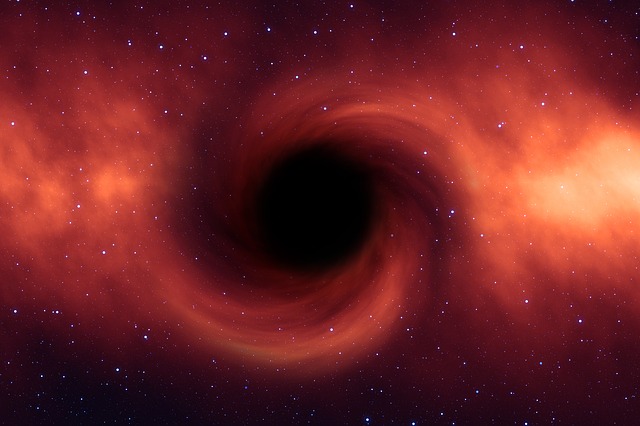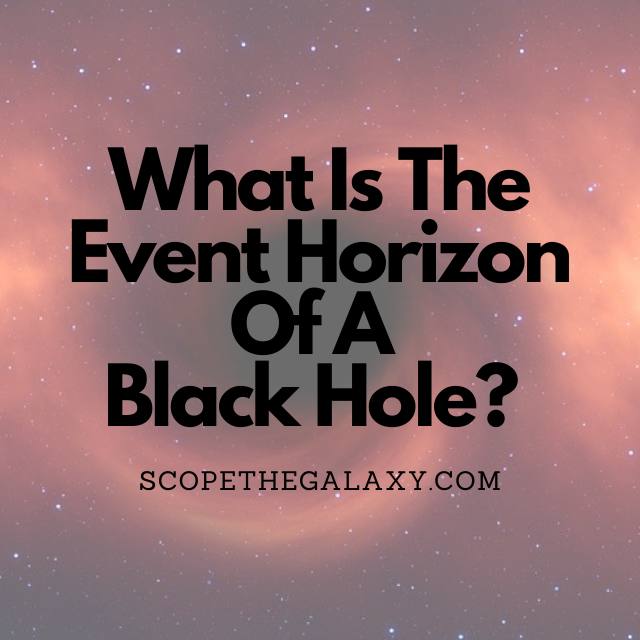*This post may contain affiliate links. This means we may make a commission if you purchase an item using one of our links*
The event horizon of a black hole – otherwise known as its surface – is the boundary where the escape velocity is higher than the speed of light. As this represents the universe’s speed limit, matter falls into the black hole but fails to escape back out of it.
Continue reading to discover why we call this area the event horizon and how it helps us understand the workings of a black hole. Explore how this phenomena forms and what happens once you pass ‘the point of no return.’
Why Is It Called The Event Horizon?
Table of Contents
The event horizon of a black hole refers to the point from which nothing, not even light, can escape. Scientists coined this the ‘event horizon’ because it’s impossible to observe any “event” inside its border. We cannot see beyond the event horizon.
A black hole is composed of many separate parts; labeling each of these allows us to understand how they function as a whole.
In 1784 the English natural philosopher, Jon Michell, proposed the idea that an object of extreme density could possess enough gravity to trap matter and prevent it from escaping. And in the 1950s, physicist Wolfgang Rindler coined the term “event horizon” to describe the point at which this occurs.
Using the Event Horizon Telescope, scientists can observe black holes by looking at the bright materials surrounding the horizon. We may not possess the ability to see inside a black hole, but we can learn a lot through observing how the particles behave around them.
What Happens At The Event Horizon?

Two parts comprise the event horizon – the outer event horizon and the inner event horizon. The outer horizon represents a point of no return for any matter that enters its field, but things begin to get really strange at the inner event horizon.
This point, also known as the Cauchy horizon, represents the place where the relationship between cause and effect changes, the rules of spacetime change, and time travel may be possible.
It’s easy to think that light gets pulled into the singularity, but this is not the case. Light gets trapped in rotation around the event horizon, and because the force at this point is stronger than the velocity of the photons, gravity wins and traps them.
Away from a black hole, particles are free to move in any direction; their only restriction is the speed of light. But as they approach a black hole, spacetime deforms, and more paths may move towards rather than away from a black hole.
All future time paths point inwards once the particle crosses the event horizon. No matter which way the particle travels, it will head towards the center of the black hole with no means to escape.
In essence, the event horizon is the gravitational field of a black hole. It’s when gravity overcomes any piece of material and draws them in. And it’s this “feeding” that allows a black hole to become active.
How Is The Event Horizon Of A Black Hole Formed?

The Schwarzschild radius is the size of the event horizon, proportional to the mass of a black hole. This radius can measure anywhere from six miles to the length of our solar system, depending on the object’s mass.
For example, the Schwarzschild radius of the earth is the size of a marble. If you could somehow compress the earth into this space, the concentrated mass would be enough to form a black hole. Black holes don’t have to be huge; they just need to be dense and compact.
It’s most likely that a black hole spins because that’s what its origin star did. Research suggests that this spinning can reach speeds exceeding 90% that of the speed of light.
A Black Hole that spins has a much better energy conversion rate than a still one. While the latter can extract around 5.7% of the energy from an object that falls into its gravity, a spinning black hole can convert up to 42%.
When particles collide, they form an invisible connection through a process called entanglement. Once these particles enter a black hole, these connections can be pulled apart, releasing a significant amount of energy.
There are still numerous things that scientists do not understand about black holes, and it is only through observation that we can understand more about these mysterious objects and exactly how they work.
What Is Beyond The Event Horizon?
Beyond the event horizon, at the center of a black hole, is the singularity. An elusive dot that everyone talks about but no one truly understands. This is because we don’t possess anything that can withstand the sheer force of its gravitational pressure – therefore, we have no way to view it.
What we do know is that within the event horizon lies the singularity of the black hole. All research suggests that this singularity is an area where an object’s matter collapses into an infinitely dense point.
Here, spacetime fabric also curves to an infinite degree, and the laws of physics – as we currently understand them – break down.
While this singularity was previously believed to be a dot, more recent research into the nature and movement of black holes leads scientists to believe that it may actually be a series of infinitely thin discs.
Summary
An event horizon describes the point of no return for any particles entering the gravity of a black hole.
This term also describes the place where we can see the “events” of a black hole. We don’t possess the tools to observe what happens at the singularity, but using telescopes to observe the event horizon can tell us a lot about a black hole’s behavior and help us understand how they work.
References
https://www.nasa.gov/vision/universe/starsgalaxies/black_hole_description.html
https://www.space.com/black-holes-event-horizon-explained.html
https://astronomy.swin.edu.au/cosmos/e/Event+Horizon
https://www.stsci.edu/~marel/black_holes/encyc_mod3_q3.html


